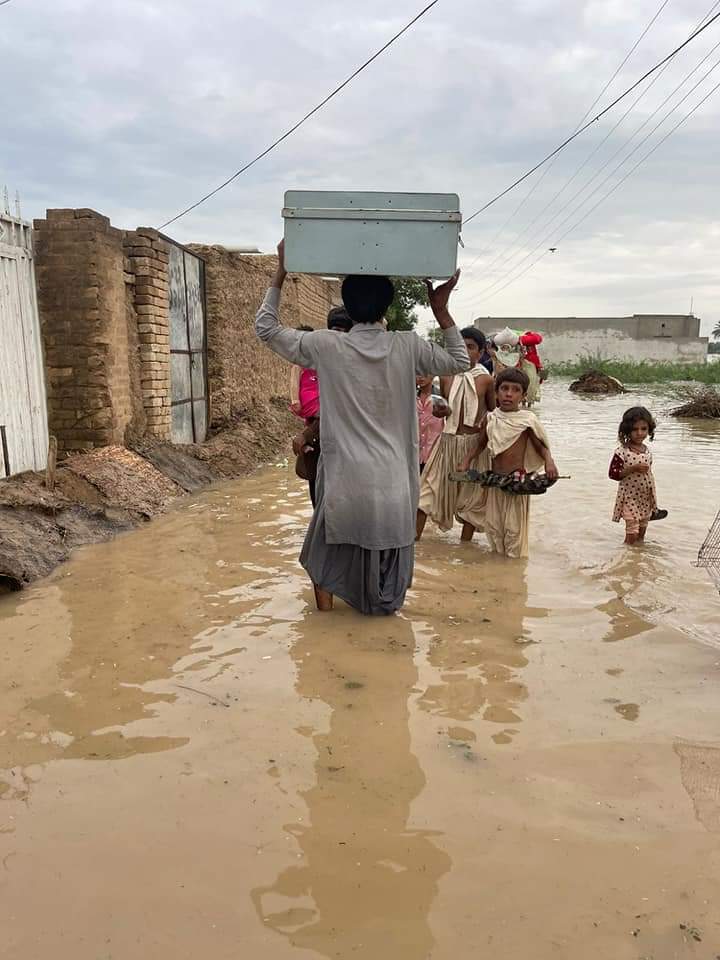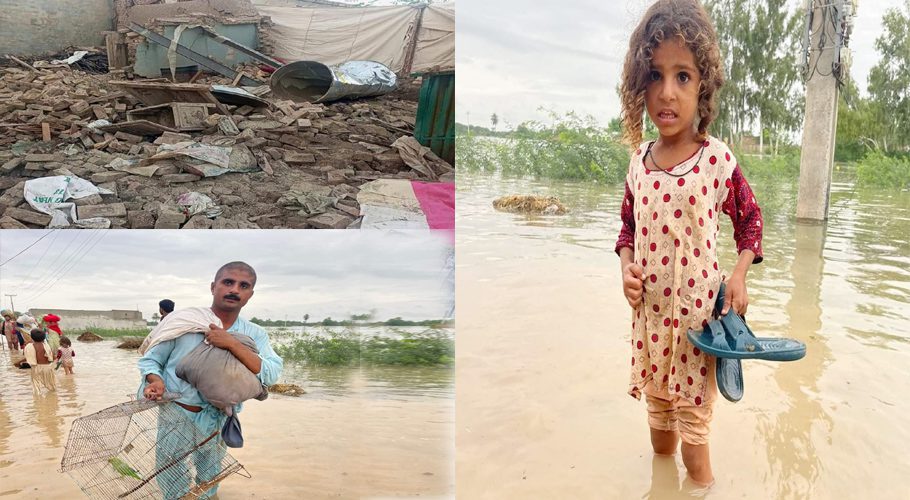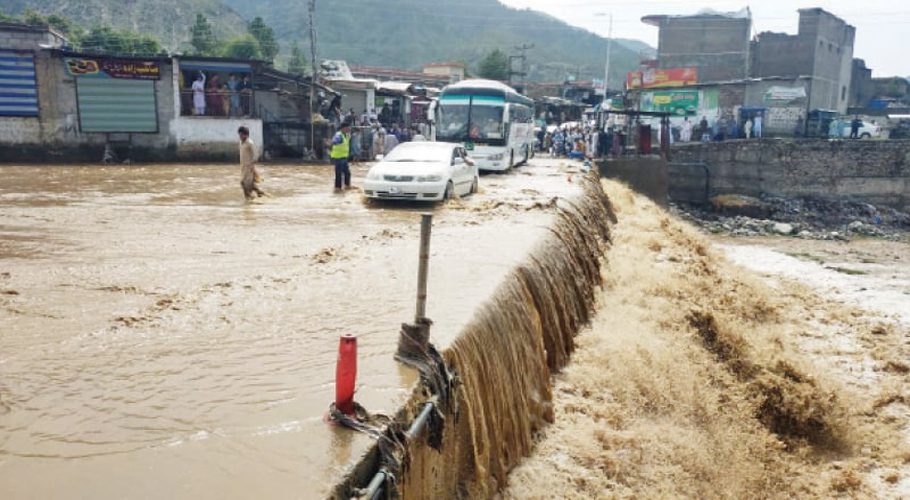The unprecedented monsoon rains and flooding continued to wreak havoc across the country as the Khyber Pakhtunkhwa (KP) government on Monday declared a state of emergency in four districts. Hundreds of thousands of people have been directly affected by relentless rains and flashfloods, while the total death toll has reached 728 since mid-June, including 156 women and 263 children, along with 1,291 others injured.
According to NDMA 27,870 houses were destroyed in the country, with 10,860 fully destroyed and 17,010 partially destroyed. Additionally, 116,771 houses, 129 bridges and 50 shops have been destroyed.
Prime Minister Shehbaz Sharif Monday directed authorities concerned to expedite the pace of rescue and relief activities in the flood-affected areas and the immediate shifting of the people trapped in flood-hit areas.
The KP government declared a state of emergency in Dera Ismail Khan, Upper and Lower Chitral and Upper Kohistan districts, while glacier melting in Gilgit-Baltistan wreaked havoc on Hoper Valley and Nagar Khas where flooding washed away small villages of Shaman and Tokerkot rendering around 50 families homeless.
Yesterday, the Sindh government declared 23 districts of Sindh including Hyderabad, Mirpurkhas and Dadu calamity-hit after heavy rainfall and floods in the areas.

According to the notification issued by the Relief Department Government of Sindh, 23 districts have been declared calamity-hit.
The districts include Hyderabad, Thatta, Badin, Tando Muhammad Khan, Dadu, Sujawal, Tando Allahyar, Jamshoro, Matiari, Mirpurkhas, Umerkot, Shaheed Benazirabad, Noshero Feroz, Sanghar, Sukkur, Khairpur, Ghotki, Larkana, Kashmore, Shikarpur, Kamber Shahdadkot, Jacobabad and Malir.
Balochistan is the worst province in the current monsoon devastation as hundreds of people have so far lost their lives in the calamity-hit areas. The death toll in the province has reached 225, with at least nine lives lost on Monday.
Currently, tens of thousands of people are at the mercy of an exceptional monsoon season, which has wreaked havoc across Pakistan aside from inundating large swaths, washing away infrastructures, and triggering landslides.
Relief goods were airdropped in Dera Ghazi Khan and Rajanpur districts of Punjab, dozens of families were shifted to tents in Gilgit-Baltistan after their villages were destroyed and efforts still under way to restore the National Highway link between Punjab and Balochistan.
Pakistan Army troops are also continuously assisting civil administration in flood-hit areas of Sindh, Balochistan and Punjab, the Inter-Services Public Relations said in a brief statement issued.
Army troops are busy in rescue and relief activities, shifting people to safer places. Army medical doctors and paramedic teams are treating flood victims. According to the military’s media wing, below are province-wise details of the devastation
The relief and rescue operation by Pakistan Air Force (PAF) is being carried out in full swing in flood-affected areas of Balochistan, Sindh and South Punjab.
During the last 24 hours, PAF rescue teams have distributed 1,000 cooked food packets, 25 tents and 2,090 pounds of rations amongst the local populace in areas which have been badly hit by torrential rains spell and flash floods, a PAF news release said.
NDMA Alerts
The National Disaster Management Authority (NDMA) on Monday directed the federal and provincial ministries and departments to ensure preparedness measures after exceptionally high level flooding forecast in the hill torrents of Dera Ghazi (DG) Khan division, and in rivers, nullahs of eastern Balochistan.
The NDMA issued an advisory to all the federal and provincial ministries stating that the Flood Forecasting Division (FFD) had forecast a ‘very high to exceptionally high level flooding’ from August 23 to 26.
“Flows from hill torrents of DG Khan Division may cause the water level in Taunsa barrage to rise up – high to very high flood level – from August 23 to 26. Urban flooding is also expected in Sindh during the same period.”
The advisory underlined that a high to very high level flooding was also expected in River Kabul at Nowshera and Tributaries of Kabul and Indus rivers.
The authority directed all relevant federal ministries, departments, provincial disaster management authorities (PDMAs) Punjab, Sindh and Khyber Pakhtunkhwa (KP), and advised respective irrigation departments, district administrations / DDMAs, municipal and city administrations to ensure identification of vulnerable points and at-risk communities.





































